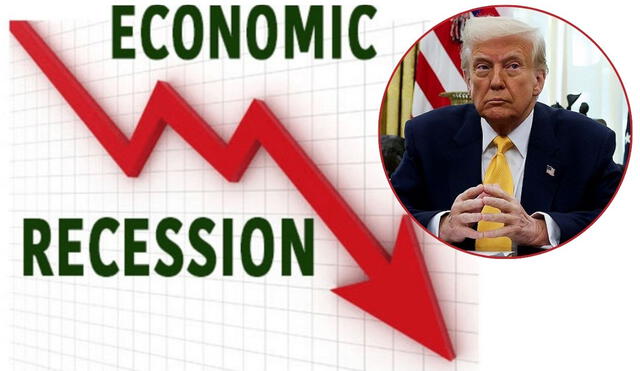Is the U.S. facing a recession under Trump? Key insights and analysis
According to the latest economic data, some signs of recession could represent an alert for U.S. citizens. Here's what you need to know.

The U.S. economy has been a topic of heated debate, with growing concerns about a potential recession. As economic indicators send mixed signals, experts are scrambling to decode whether the world’s largest economy is heading toward a downturn under Donald Trump's second term. From fluctuating job markets to shifting consumer spending, the data paints a complex picture.
Recent reports highlight a slowdown in key sectors, including manufacturing and retail, while inflation remains stubbornly high. The Federal Reserve’s aggressive interest rate hikes, aimed at curbing inflation, have added to the uncertainty. Are these signs of a temporary adjustment or the beginning of a full-blown recession?
Key indicators: What’s sparking the recession fears?
One of the most telling signs is the inverted yield curve, a historically reliable predictor of recessions. This occurs when short-term Treasury yields exceed long-term ones, signaling investor pessimism about the economy’s future. Furthermore, consumer confidence has dipped, with households tightening their belts amid rising costs for essentials like housing, food, and energy.
Key metrics like GDP growth, inflation rates, and employment figures are under the microscope. While some sectors show resilience, others are struggling, creating a tug-of-war between optimism and caution. The Federal Reserve’s ongoing efforts to control inflation through interest rate hikes have added another layer of complexity, raising questions about their impact on economic stability.
Are Trump’s economic policies a factor?
In his second term, President Trump has continued to champion policies focused on tax cuts, deregulation, and domestic manufacturing. While these measures have spurred growth in certain sectors, critics argue that they have also exacerbated the national debt and left the economy vulnerable to shocks.
The administration’s handling of inflation has been particularly contentious. Despite efforts to boost domestic production and reduce reliance on global supply chains, prices for goods and services remain high. The Federal Reserve’s ongoing battle with inflation has led to higher borrowing costs, further straining businesses and consumers alike.
What’s next for the U.S. economy?
While the data raises red flags, it’s too early to declare a recession. Economists emphasize that the U.S. economy has shown remarkable resilience in the past, and current challenges may not spell disaster. However, vigilance is key. Policymakers, businesses, and consumers must prepare for potential headwinds while hoping for a soft landing.
The Federal Reserve’s next moves will be critical. Balancing inflation control with economic growth is a delicate act, and missteps could tip the scales toward recession. Meanwhile, consumer behavior will play a key role in determining whether the economy stabilizes or falters. As 2025 progresses, the U.S. economy remains at a pivotal moment. While the data raises concerns, it also offers hope for a soft landing.












